d I am going to introduce all of them to you. You will find 9 kingfisher species below, and all of them are in Cambodia. Let’s see if you have come across any of them before.
Banded Kingfisher (កដបព្រៃ)
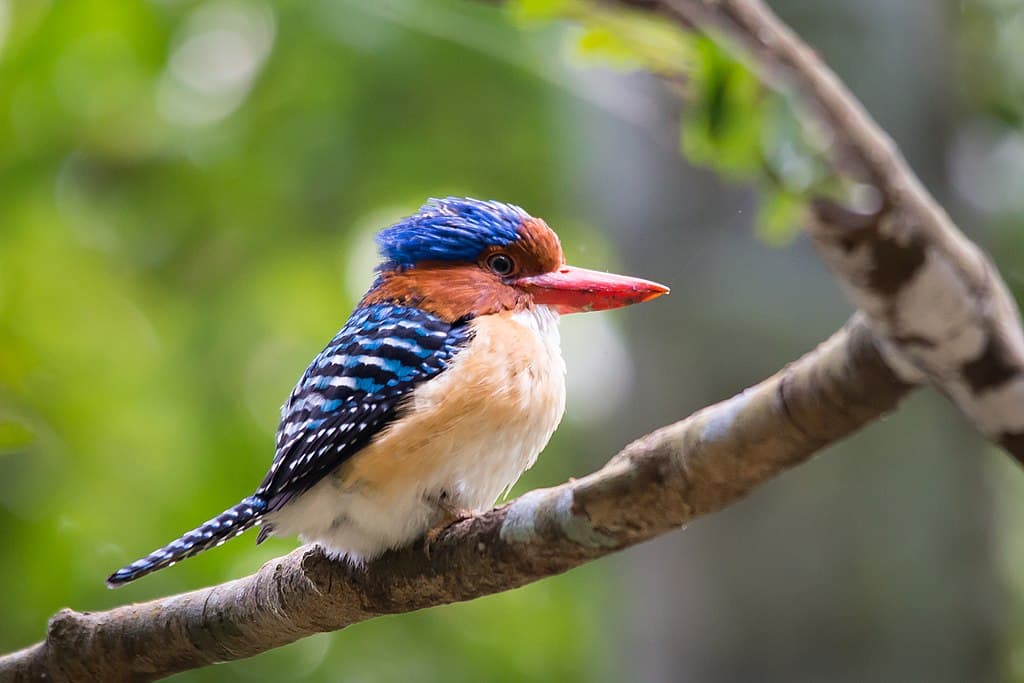
A banded kingfisher is around 20 centimeters long, and you can differentiate between males and females by their appearances. An adult male has a chestnut forehead, cheeks, and nape while the rest of the upperparts, wings, and tail are black with blue bands. He has rufous breast, flanks, and undertail along with a white central belly. As for an adult female, she has black and rufous banded upperparts, and white underparts with black bars on the chest and flanks. Both sexes have a sturdy red bill and a short crest that they slowly raise and lower.
This is a tree kingfisher species that lives in tropical and lowland tropical forests across Southeast Asia but is extinct in Singapore. Banded kingfishers reside in lowland forests where they build nests in a hole in a rotting tree trunk. Their nests are usually near dry forests, mangrove forests, shallow rivers, and streams. As the tree species, they hunt large insects in the forests but also take on small lizards on the ground. Since they are solitary, these kingfishers live in their nest and hunt alone most of the year.
Blue-Eared Kingfisher (ចចាតត្រចៀកខៀវ)
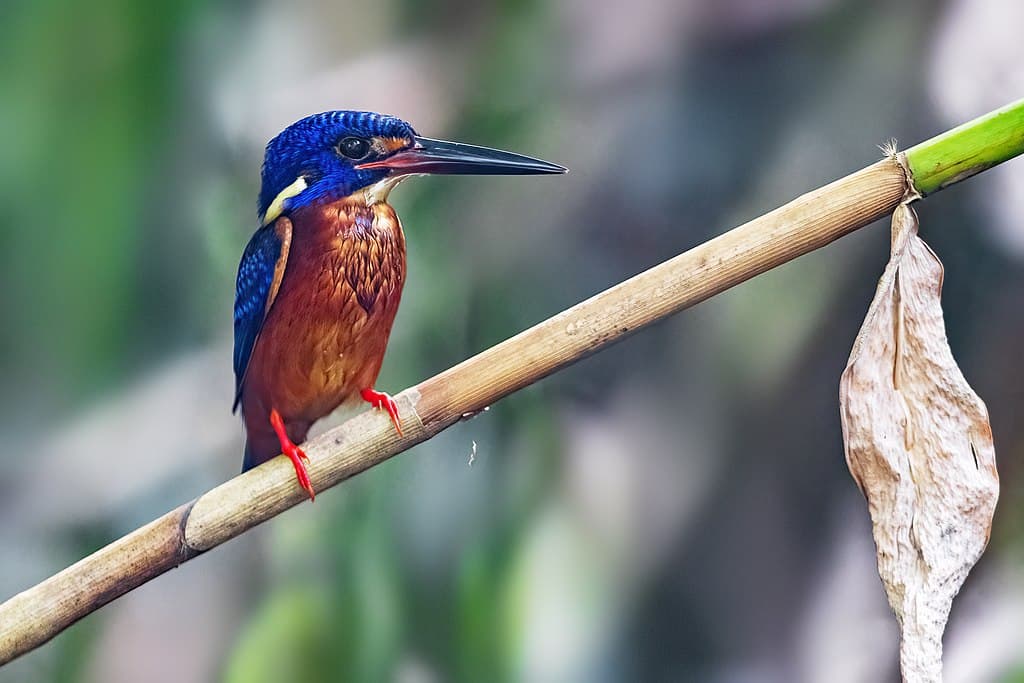
The blue-eared kingfishers are small kingfishers that grow to only about 16 centimeters long. At a glance, you probably think it is a common kingfish due to its similar appearance but it is not. You can tell the difference by this bird’s blue ear coverts along with darker and more intense cobalt blue upperparts. A blue-eared kingfisher has bright blue upperparts and breast, rufous-orange underparts, and sapphire blue face, nape, and head.
This kingfisher species ranges across the Indian Subcontinent and Southeast, especially in dense shaded forests as well as mangroves. Where they live, they usually perch on branches that overhang above streams so that they can observe prey. Once a blue-eared kingfisher notices its prey, it will dive to catch it in the water. Some of the most common prey are crustaceans, dragonfly larvae, fish, grasshoppers, and mantis.
Collared Kingfisher (កដបខៀវស)
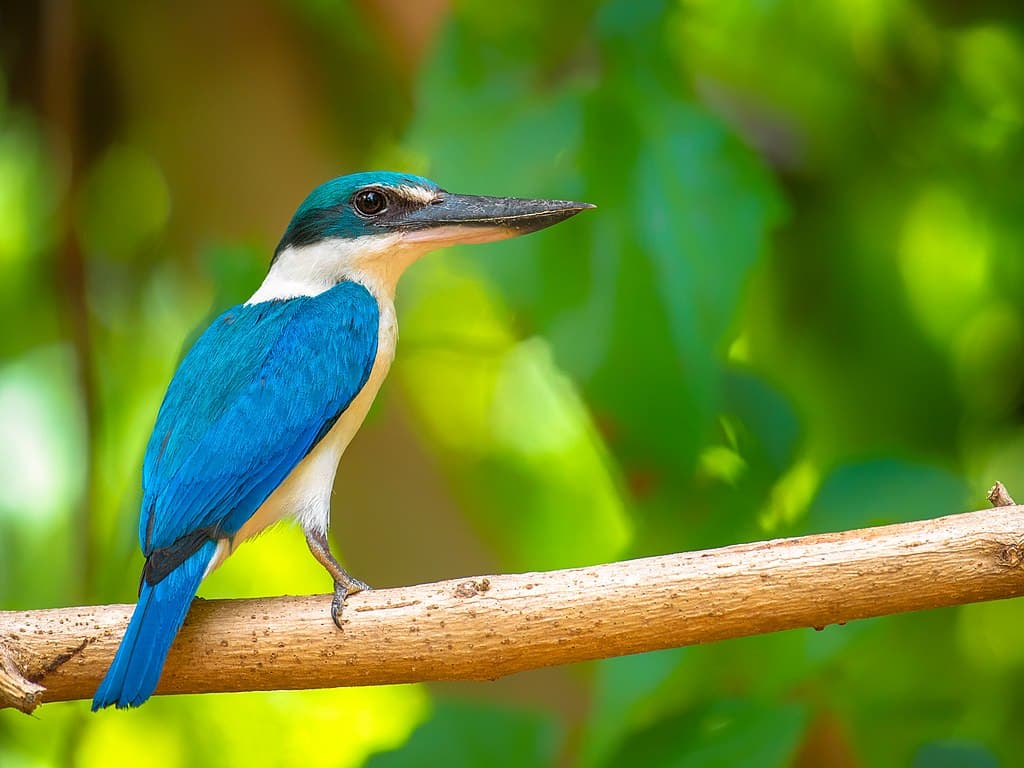
Here you are looking at a medium-sized kingfisher species that also goes by the name black-masked kingfisher or white-collared kingfisher. It grows from 23 to 25 centimeters long, and it is quite easy to recognize. A collared kingfisher has blue to green underparts with buff or white underparts with a collar around the neck. Some subspecies have buff or white stripes over the eye while others have a white spot between the eye and bill. Despite the size, these little birds are actually quite aggressive, especially during the breeding season. They may attack other animals that enter their breeding territory or snatch food from other birds.
Being one of the most widespread kingfisher species, its range is across India, the Middle East, Northeast Africa, Southeast Asia, and Northern Australia. Another nickname for this bird is the mangrove kingfisher due to its coastal habitats which is in mangrove swamps. Besides those, they also inhabit farmlands, gardens, grasslands, and woodlands as well as forest and mountain areas on islands. Due to their habitats, some of their favorite meals are seafood such as crabs and shrimps. At the same time, they also feed on earthworms, frogs, insects, lizards, small birds, small fish, small snakes, snails, and spiders. When hunting, they wait and perch still on the tree branches before swooping down on their prey or diving in to snatch them.
Common Kingfisher (ចចាតក្រឹម)
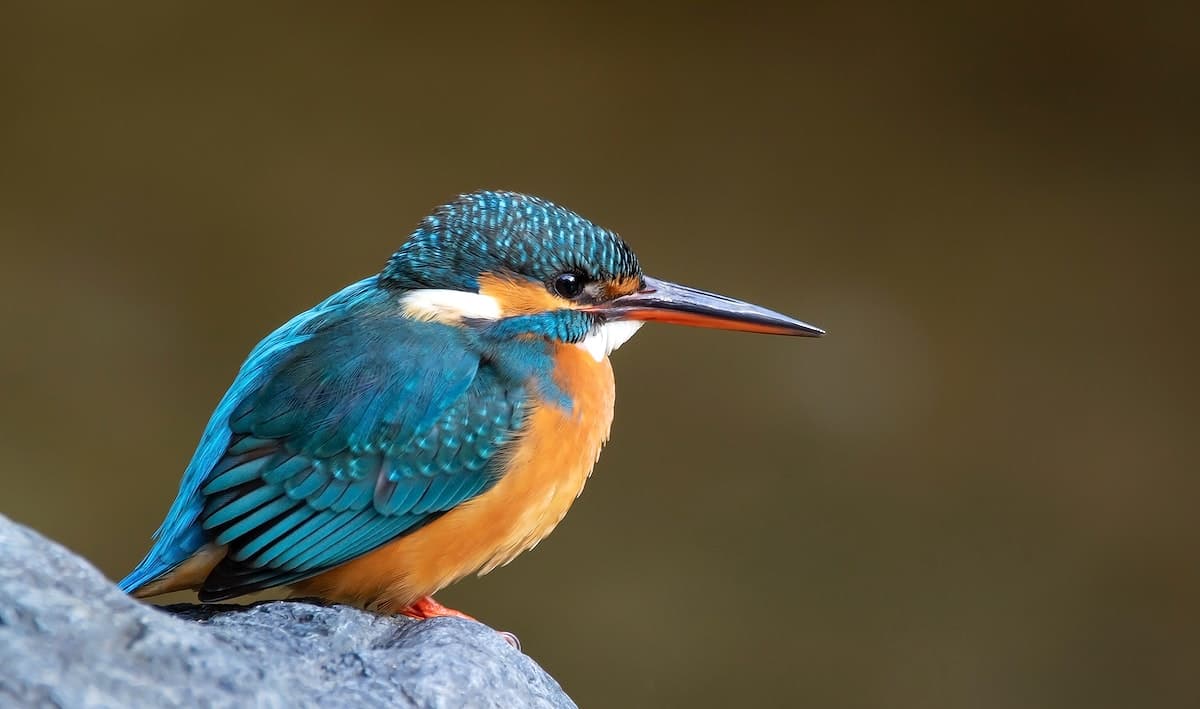
Looking absolutely gorgeous, the common kingfisher is a delight to look at. As you can see, it has bright metallic blue upperparts, coppery-brown or orange underparts, and white blotches on its head and wings. A common kingfisher grows to about 17 to 19 centimeters long, with a wingspan of 25 centimeters. It has a very strong beak, and you can distinguish males from females by the color of their beak. Male common kingfishers have all-black beaks while the females’s lower beak is red-brown.
The common kingfishers are the most widely distributed kingfisher species in the world, ranging across Asia, Europe, and North Africa. In temperate regions, they inhabit clear and slow-flowing lakes, rivers, and streams with well-vegetated banks. Along with that, they also frequent bushes and scrubs with overhanging branches as well. When winter comes, common kingfishers are more coastal so they feed in estuaries or harbors and areas along rocky seashores. For those who live in tropical regions, they live by slow-flowing rivers in mangrove creeks and swamps.
One of the most interesting things about these birds is that they have transparent third eyelids. This feature allows them to dive into the water to capture fish prey. Not to mention the keen eyesight from their monocular vision in the air and binocular vision in the water, they are one of a kind. Some of their common meals are minnows, small roaches, sticklebacks, and trouts. Besides fish, they also feed on aquatic insects like dragonfly larvae and water beetles as well as crustaceans.
Black-Capped Kingfisher (កដបក្បាលខ្មៅ)
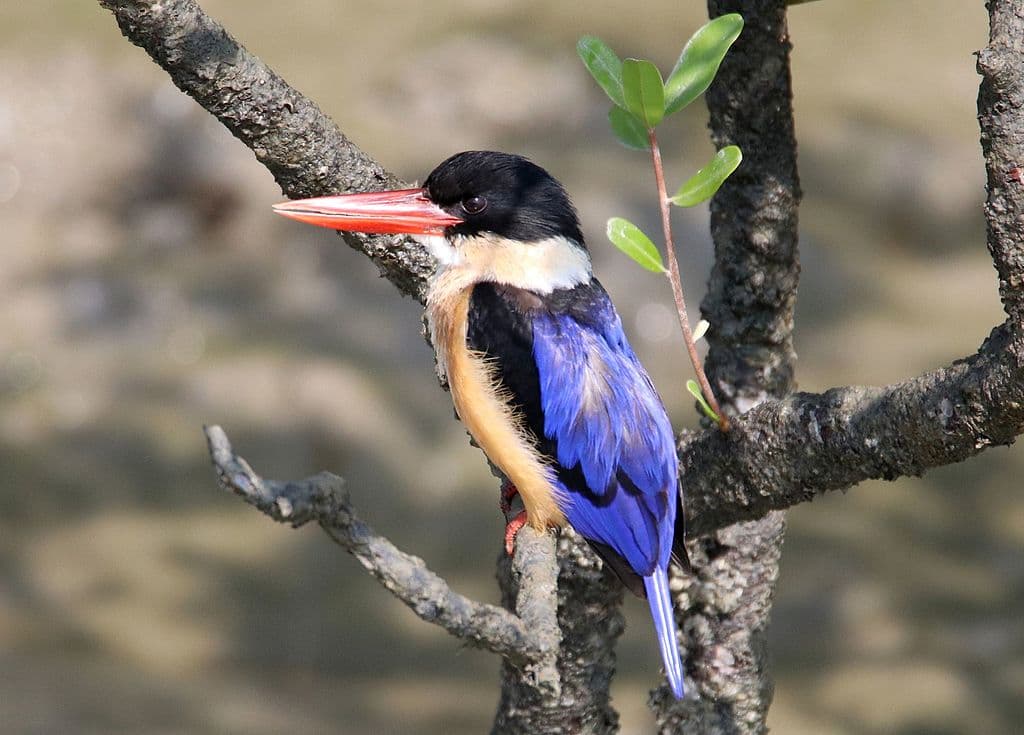
The black-capped kingfisher is around 28 to 31.5 centimeters long, and its appearance is very easy to recognize. A black-capped kingfisher has a purple-blue back and wings with black head and shoulders, and its neck collar and throat are white. It has black flight feathers with white patches that look so beautiful when flying. Not different from other kingfisher species, this one also has large bills, and the bill is bright red.
Their most common habitats are mangrove forests and along the estuaries and rivers in South Asia and Southeast Asia. Along with that, they are also found in creeks, cultivated land, lagoons, and rice fields. Usually, these kingfishers live in coastal waters, especially mangroves where they perch and dive to catch fish. Apart from fish, they also feed on large insects as well as crabs.
Pied Kingfisher (កដបខ្មៅស)
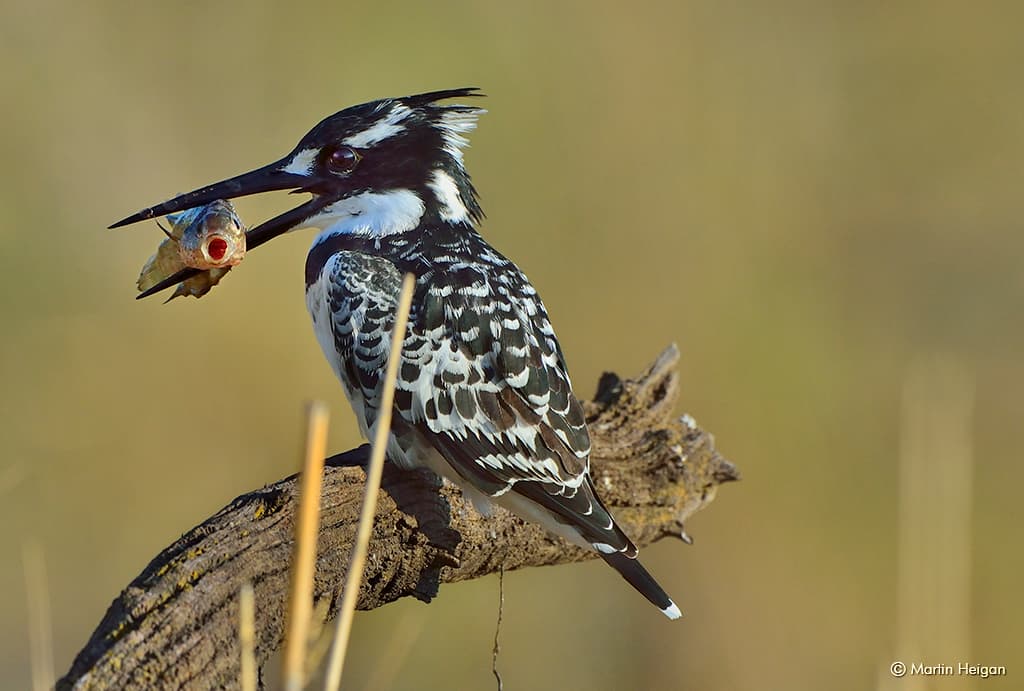
Being about 25 centimeters long, this medium-sized kingfisher has a very fascinating look. Here we have the only black and white kingfisher in the world. It has a black and white plumage and face along with a white supercilium and black breast bands. At the same time, this bird also has a neat crest that aligns perfectly with its large and long bill. Pied kingfishers are extremely social birds so they hang out in pairs or small groups where they take care of each other. The birds help each other to raise chicks and defend territory which is a very fascinating behavior.
This water kingfisher species is widely distributed across Asia and Africa, living in plains and higher hills. They do not migrate at all, what they normally do is short-distance seasonal movements. Not different from other kingfishers out there, this one also mainly feeds on fish. Along with that, they also eat crustaceans, frogs, and large aquatic insects like dragonfly larvae. Pied kingfishers usually hover over the water to detect prey before diving vertically bill-first to capture prey. The cool part is that male tries to attract females by offering food that lasts about 3 weeks. If the female is interested, she will agree to the breeding and things go from there.
Ruddy Kingfisher (កដបក្រហម)
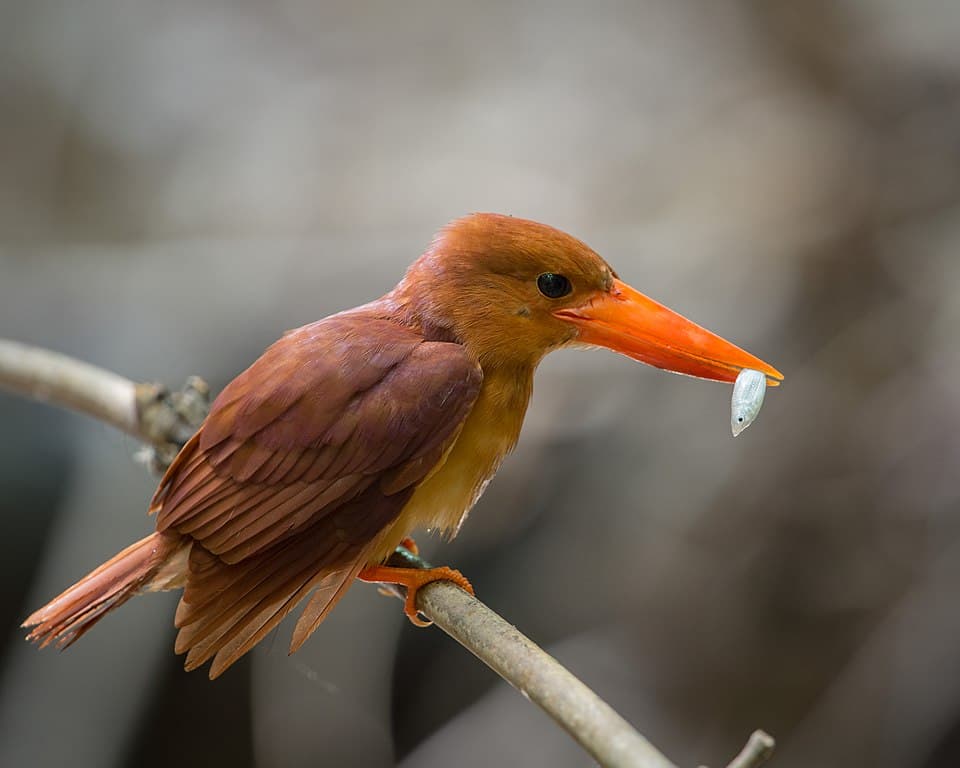
Reaching the size of around 25 centimeters, ruddy kingfishers are large kingfisher species with bright red bill and legs. The body of the bird is bright rufescent plumage that deepens to purple at the tail with a bluish-white pact on the lower back. It has a large bill, and both its bill and feet are red or reddish-orange in color.
The range of these kingfishers is from South Korea and Japan all the way to China, India, and Southeast Asia. Their habitats include temperate and tropical zones, mostly in thick jungles and rainforests along with forest edges, mangroves, and wooded areas. Not different from other kingfishers out there, this one also feeds on crustaceans, fish, and large insects. In case running water is lacking, they also take on frogs and other amphibians as well. These birds are active in the early mornings and evenings on hot days, or all day when the weather is cool.
Stork-Billed Kingfisher (ងាវកក)
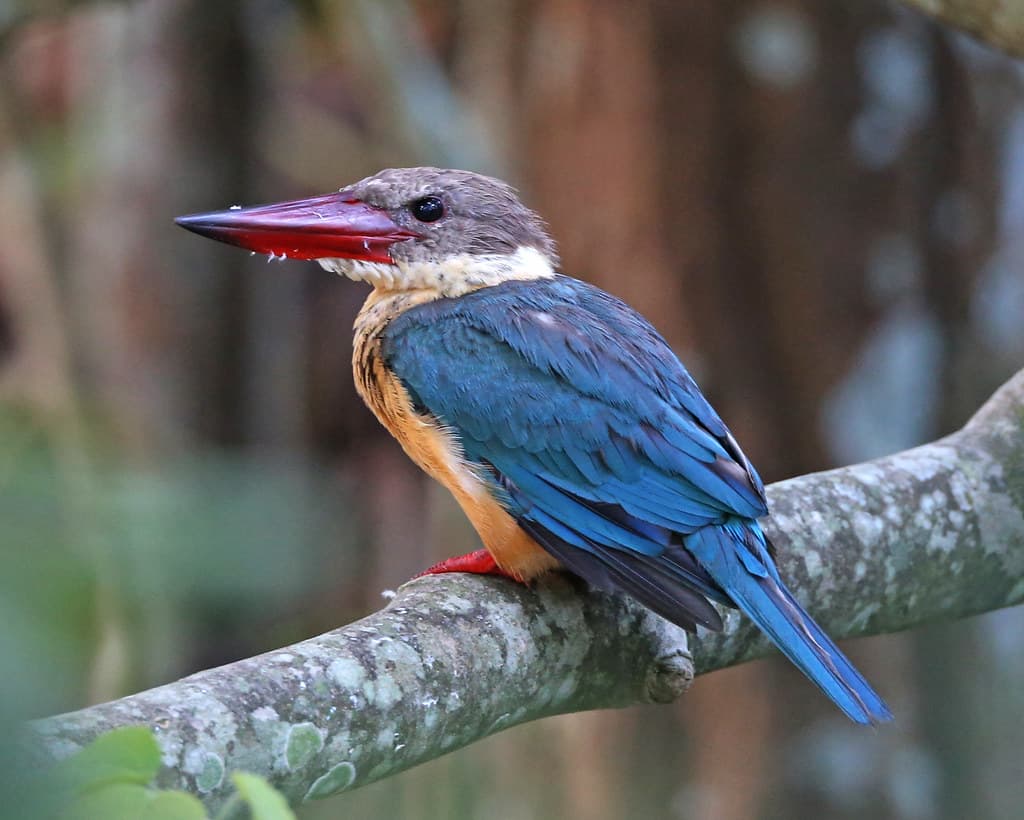
The stork-billed kingfishers are one of the large kingfisher species that can grow up to 35 centimeters long. It has a green back, buff neck and underparts, blue wings and tail, and its head is olive-brown. The bill of this bird is very large, and both the bill and legs are bright red in color.
These large kingfishers live in a wide range of habitats across South and Southeast Asia including coasts, lakes, and rivers. They build their nests in decaying trees, river banks, or tree termite nests. Where they live, they feed on crabs, fish, frogs, rodents, and young birds. Unfortunately, the forest habitats that provide them with food and shelter have been vulnerable to deforestation, development, and water pollution. Their population is still doing well in the wild but we don’t know for how long.
White-Throated Kingfisher (កដបទ្រូងស)
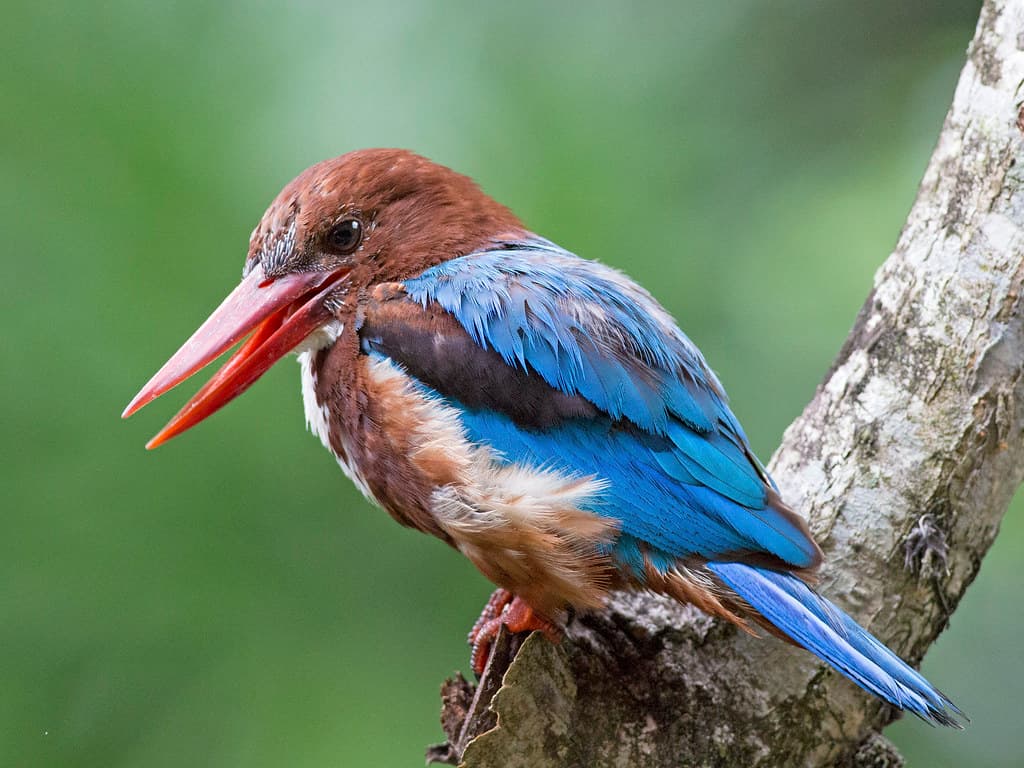
The coloration of this kingfisher species is so unreal but it looks extremely gorgeous. An adult white-throated kingfisher has a bright blue back, wings, and tails while its head, flanks, lower belly, and shoulders are chestnut. And just like the name suggests, it has a white throat and the breast is also white. As for the large bill and legs, they are bright red. The wings of this kingfisher provide rapid and direct flight along with the ability to hover in one spot too.
You can find this kingfisher species across South Asia and Southeast Asia, living in a wide variety of habitats. Their most common habitats are open country in the plains with trees, wires, or other perches. Besides these, they also live in agricultural areas, dry deciduous forests, lakes, mangrove swamps, marshes, oil palm plantations, parklands, and swamps. They perch within their territory looking for potential prey such as large crustaceans, earthworms, fish, frogs, insects, rodents, and snakes.
Related Post: Woodpecker Species In Cambodia
